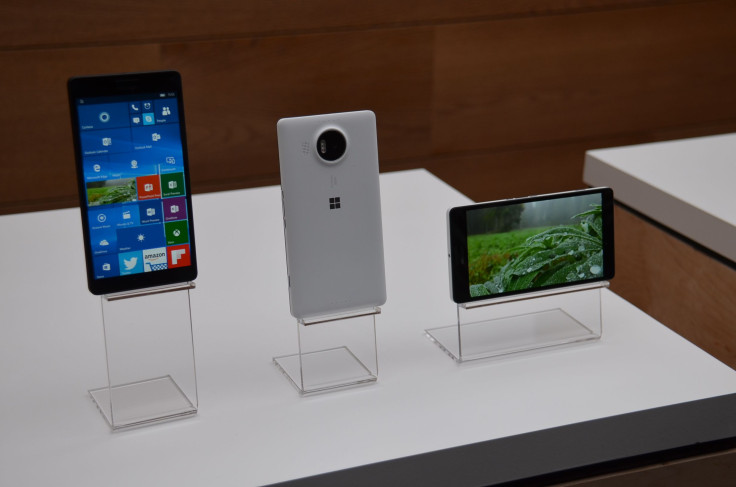Can The Lumia 950 Replace Your Laptop? Microsoft 'Continuum' Attempts PC-Like Experience On Windows 10 Smartphone

Microsoft has come one step closer to answering the question of whether smartphones can replace desktop computers. And the Lumia 950 is a glimpse of what that experience could be like.
On its own, the smartphone sounds like a typical device on the market -- Qualcomm hexa-core processor, 32GB of storage and a large 5.2-inch QHD display. When it’s connected to a Microsoft Display Dock, monitor, keyboard and mouse, it transforms into what is almost a full Windows 10 PC.
Microsoft calls this feature Continuum -- a “PC-like” experience for Windows smartphones. When the Lumia 950 or 950 XL is connected to a Display Dock, the phone shows a desktop interface on the external monitor. From there, users can launch the same mobile Office apps, which automatically scale to fit the larger display. With HDMI support from the Display Dock, Lumia 950 owners can also play HD movies and content onto the larger screen. At the same time, it’s possible to use the phone to send text messages without affecting what’s displayed on the external monitor.
Microsoft’s native apps and Microsoft Office are supported by Continuum out of the box. But third-party developers will need to make their own Windows 10 apps to take advantage of it as well.
While Microsoft is the latest company to take a whack at combining the mobile and desktop experience, it’s hardly the first to try. Motorola in 2011 launched its Atrix a smartphone that could plug into a dock and turn into an Ubuntu Linux-based desktop PC, complete with keyboard and display. Canonical attempted a similar idea in 2013 with Ubuntu Edge on Kickstarter, but it failed to meet its ambitious $32 million funding goal.
Consumers who want to get their hands on the Lumia 950 will have to shell out $549 when it begins shipping in November. Microsoft has yet to announce a price or shipping date for the Microsoft Display Dock.
© Copyright IBTimes 2024. All rights reserved.






















